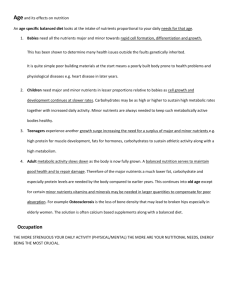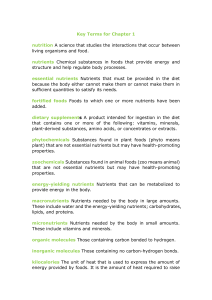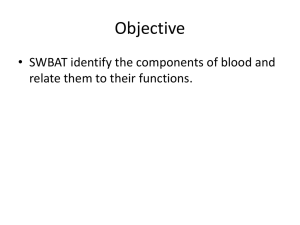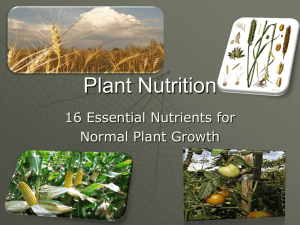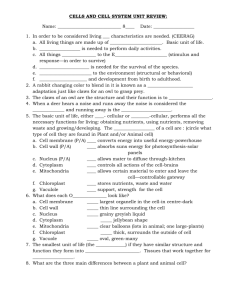Teacher: Kelly Brady Class:10th Grade Biology Unit Title: The Matter
advertisement
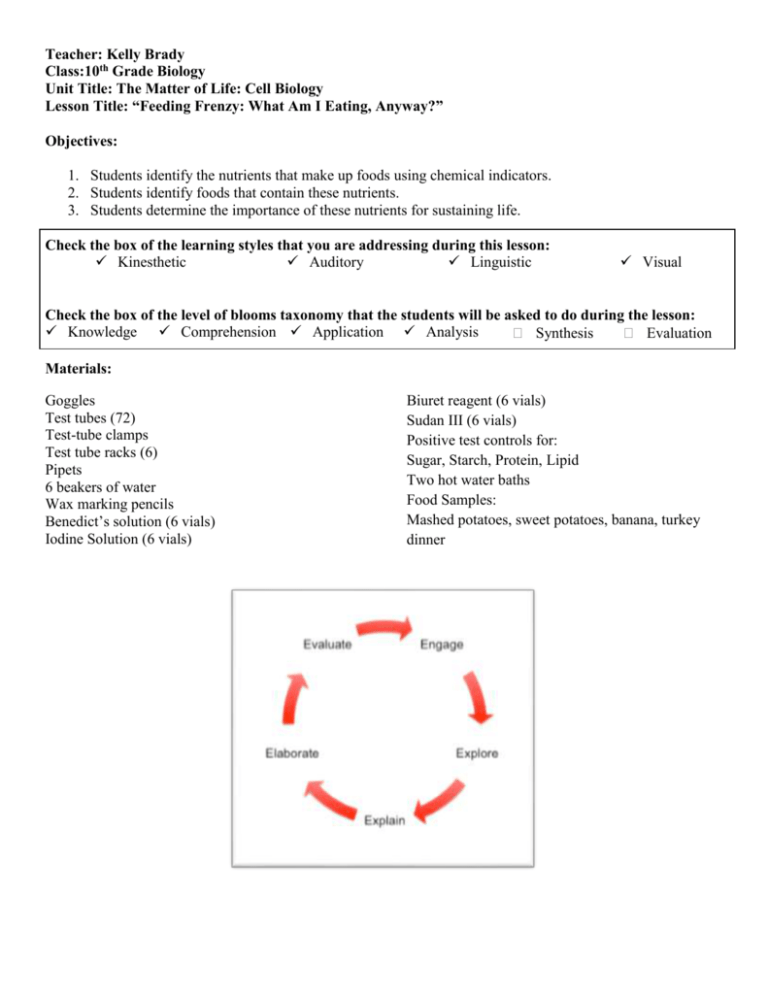
Teacher: Kelly Brady Class:10th Grade Biology Unit Title: The Matter of Life: Cell Biology Lesson Title: “Feeding Frenzy: What Am I Eating, Anyway?” Objectives: 1. Students identify the nutrients that make up foods using chemical indicators. 2. Students identify foods that contain these nutrients. 3. Students determine the importance of these nutrients for sustaining life. Check the box of the learning styles that you are addressing during this lesson: Kinesthetic Auditory Linguistic Visual Check the box of the level of blooms taxonomy that the students will be asked to do during the lesson: Knowledge Comprehension Application Analysis Evaluation Synthesis Materials: Goggles Test tubes (72) Test-tube clamps Test tube racks (6) Pipets 6 beakers of water Wax marking pencils Benedict’s solution (6 vials) Iodine Solution (6 vials) Biuret reagent (6 vials) Sudan III (6 vials) Positive test controls for: Sugar, Starch, Protein, Lipid Two hot water baths Food Samples: Mashed potatoes, sweet potatoes, banana, turkey dinner Engage: Connection to what students know 1. What are the eight characteristics of life? Respond, Use Energy, Use Nutrients, Organic, Made of Cells, Grow, Die 2. What have we done so far? Respond, Use energy 3. Where does energy in living systems come from? SUN 4. Where do we get our energy? Food/ SunPlantAnimal 5. Where do plants get their nutrients? Soil/air 6. Where do we get our nutrients? Food Learning Target: Prove that food provides key nutrients for sustaining life. Explore: Hands-on experience Think-pair-share for pre-lab questions. Lab: Students use chemical indicators to determine some of the nutrients present in foods. Working in their groups, students test several food samples and compare the results to positive and negative controls. Explain: Students explain their understanding of concepts and processes. In their composition book students will write a lab report and answer analysis questions # 2, 3, 4, 5 2. Describe any sources of error that might have affected your results. 3. Why was it important use different eyedroppers for the different solutions? 4. What function did the negative control serve? The positive control? 5. Did some nutrients appear to be present in greater amounts than other nutrients? Elaboration: Allow students to apply activities in context. In their composition book students will answer analysis questions #6, 7, 8 6. Through reading and experimentation, y0ou have identified certain nutrients that are present in food. Create a table listing these nutrients across the top. List the foods that you have eaten today along the left side of the table. Decide which nutrient(s) you received from each of the foods you ate and place a check mark in the appropriate column. Base your decisions on the results from the class data about the nutrients in the samples tested and your own knowledge about nutrients. What if anything, surprises you about your diet? 7. Do you think your diet adequately meets your nutritional requirements? Why or why not? 8. Do you take particular care about what you eat each day? If so, what kinds of food do you try to eat and why? Evaluation: Students assess their own knowledge, skills and abilities. Students will “red pen” their answers in their composition books through classroom discussion. Red pen allows the students the opportunity to evaluate the quality of their answers and then expand and improve their understanding of a concept. Assessment: 1. Lab Report graded with the rubric 2. Data from the lab 3. Classroom discussion 4. Analysis questions 5. Composition book score 6. Test at a later date over the unit



